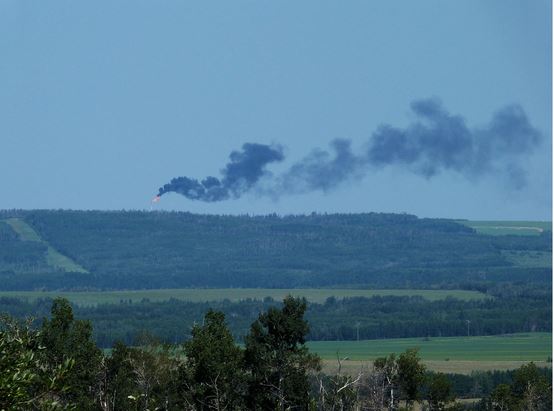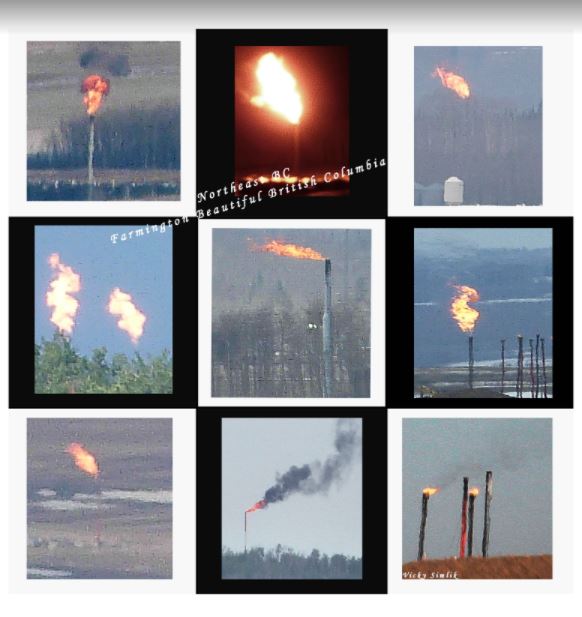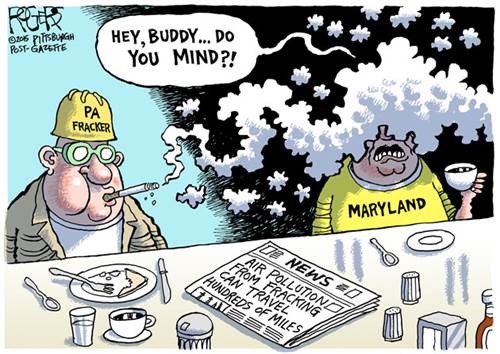


![]() Photos of toxic frac pollution in NEBC. See a regulator anywhere? Oh right, they’re busy in cushy offices with big pay cheques deregulating to serve polluters.
Photos of toxic frac pollution in NEBC. See a regulator anywhere? Oh right, they’re busy in cushy offices with big pay cheques deregulating to serve polluters.![]()

![]() Photo above oil/gas patch pollution blowing directly into Calgary
Photo above oil/gas patch pollution blowing directly into Calgary![]()

![]() Frac pollution in Alberta
Frac pollution in Alberta![]()
In 2022, Oil & Gas Facilities Reported over 13 Million Tons of Air Pollution in Pennsylvania by bobscaping, Dec 21, 2023
that’s over 26 billion pounds (lbs.) of air pollution
Washington County has been overrun with Marcellus shale gas development since it began there in 2004, with 64 compressors and gas processors being constructed in just the first 14 years. Unbridled development has continued, with an industry push for more pipelines and LNG exports by David E. Hess, PA Environment Digest, December 20, 2023
(Reprinted from the Pa Environment Digest)
(Photos and images have been added to the original blog)
…
Breakdown Major Air Pollutants in 2022:
Methane emissions – 165,794 tons
Carbon dioxide – 13,222,355 tons
Volatile organic compounds – 6,837 tons
Particulate Matter 2.5 – 918 tons
Particulate Matter 10 – 994 tonsDetailed breakdown of 2022 Pollutants:
5,458 oil and gas facilities at 3,692 sites in Pennsylvania reported:
0.21 tons – 1,3 Butadiene [EPA Hazardous Air Pollutant]
55.68 tons – 2,2,3 – Trimethylpentane [EPA Hazardous Air Pollutant]
71 tons – Acetaldehyde [EPA Hazardous Air Pollutant]
49.93 tons – Acrolein [EPA Hazardous Air Pollutant]
5.71 tons – Ammonia
45.89 tons – Benzene [EPA Hazardous Air Pollutant]
1.81 tons – Butane
13,222,354.9 tons – Carbon Dioxide [Greenhouse Gas]
11,284 tons – Carbon Monoxide
81.81 tons – Ethane
8.74 tons – Ethyl Benzene [EPA Hazardous Air Pollutant]
813.78 tons – Formaldehyde [EPA Hazardous Air Pollutant]
76.56 tons – Hexane [EPA Hazardous Air Pollutant]
0.23 tons – Isopentane
0.01 tons – Lead [EPA Hazardous Air Pollutant]
0.00010 tons – Mercury [EPA Hazardous Air Pollutant]
165,793.87 tons – Methane
218.04 tons – Methanol [EPA Hazardous Air Pollutant]
75.41 tons – n-Hexane [EPA Hazardous Air Pollutant]
21,830.47 tons – Nitrogen Oxides
83.6 tons – Nitrous Oxide
1.44 tons – Non-Methane Hydrocarbons
993.77 tons – Particulate Matter – 10 microns
917.62 tons – Particulate Matter – 2.5 microns
673.57 tons – Particulate Matter – Condensable
1.7 tons – Pentane
0.84 tons – Polycyclic Organic Matter
4.32 tons – Propane
350.13 tons – Sulfur Oxides
46.39 tons – Toluene [EPA Hazardous Air Pollutant]
6,837.05 tons – Volatile Organic Compounds
34.98 tons Xylenes (Isomers and Mixture) [EPA Hazardous Air Pollutant]…
Disagreements over Accuracy
There have been major disagreements on how accurate this self-reporting is, in particular related to conventional oil and gas facilities because they frequently do not report their emissions.
… The black carbon pollution issue becomes extremely relevant when studying oil and gas air pollution, since so much diesel trucking is involved in shale gas production, primarily in upwind counties to the southwest, west and northwest of Allegheny County, including ones in Ohio and the panhandle of West Virginia. Air pollution knows no boundaries.


…

Another black smoke event near a daycare and county VoTech school.
…

The individual who took these photos, and many more like them, has since moved out of state, from their former shangri-la in Washington County. During their final years living there, some of their cats developed serious health issues.
…

More visuals/documents by bobscaping.
